Pans Labyrinth
8.7 /10 2 Votes
Language Spanish | 8.4/10 IMDb Genre Drama, Fantasy, War Duration Country SpainMexico | |||||||||||||||||||||||||||||||||
 | ||||||||||||||||||||||||||||||||||
Release date 27 May 2006 (2006-05-27) (Cannes)11 October 2006 (2006-10-11) (Spain)20 October 2006 (2006-10-20) (Mexico) Cast (Ofelia), Maribel Verdú (Mercedes), (Capitán Vidal), (Fauno / Pale Man), (Carmen), Álex Angulo (Dr. Ferreiro)Similar movies Blackhat , The Great Silence , Sweet Sweetback's Baadasssss Song , Lonesome Jim , Kismet , Salt Tagline What happens when make-believe believes it's real? | ||||||||||||||||||||||||||||||||||
Pan s labyrinth 2006 ofelia tribute official main theme javier navarrete
Pan's Labyrinth (Spanish: El laberinto del fauno, 'The Labyrinth of the Faun') is a 2006 Spanish-Mexican dark fantasy film written and directed by Mexican filmmaker Guillermo del Toro. It was produced and distributed internationally by Esperanto Filmoj and Warner Bros.
Contents
- Pan s labyrinth 2006 ofelia tribute official main theme javier navarrete
- Pan s labyrinth
- Plot
- Cast
- Influences
- Effects
- Subtitles
- Distribution
- Reception
- Other awards
- Top 10 lists
- Spanish films
- Non Spanish films
- Soundtrack
- Cancelled sequel
- References

The story takes place in Spain in May–June 1944, five years after the Spanish Civil War, during the early Francoist period. The narrative intertwines this real world with a mythical world centered on an overgrown abandoned labyrinth and a mysterious faun creature, with whom the main character, Ofelia, interacts. Ofelia's stepfather, the Falangist Captain Vidal, hunts the Spanish Maquis who fight against the Francoist regime in the region, while Ofelia's pregnant mother Carmen grows increasingly ill. Ofelia meets several strange and magical creatures who become central to her story, leading her through the trials of the old labyrinth garden. The film employs make-up, animatronics, and CGI effects to bring life to its creatures.
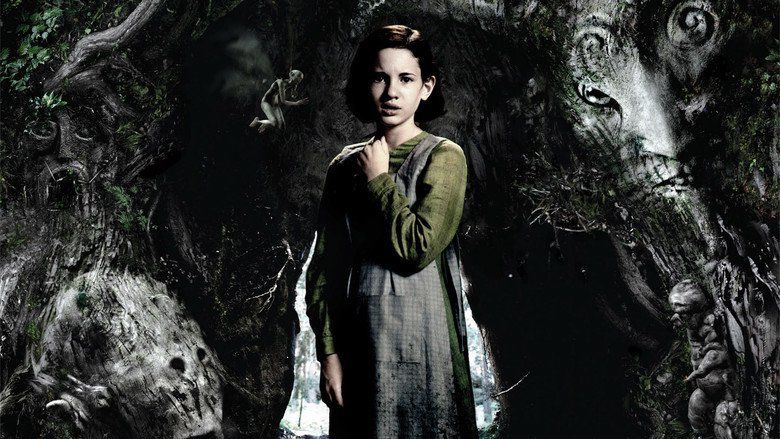
Del Toro stated that he considers the story to be a parable, influenced by fairy tales, and that it addresses and continues themes related to his earlier film The Devil's Backbone (2001), to which Pan's Labyrinth is a spiritual successor, according to del Toro in his director's DVD commentary. The original Spanish title refers to the fauns of Roman mythology, while the English, German and French titles refer specifically to the faun-like Greek deity Pan. However, del Toro has stated that the faun in the film is not Pan.
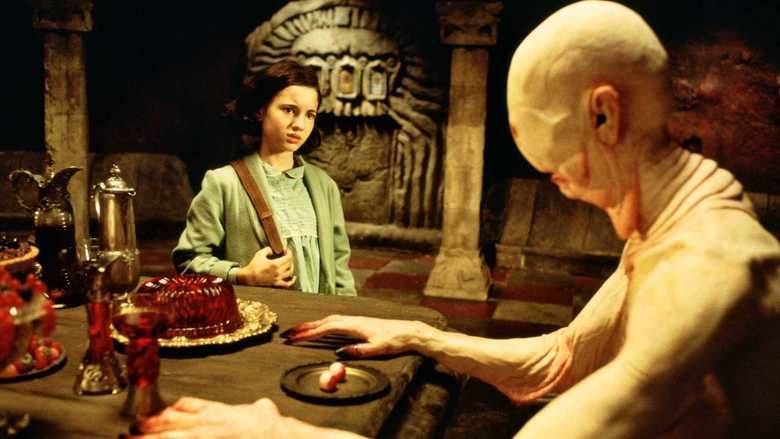
The film premiered at the 2006 Cannes Film Festival. It was released in the United Kingdom on 24 November 2006. In the United States and Canada, the film was given a limited release on 29 December 2006, with a wide release on 19 January 2007. Pan's Labyrinth opened to widespread critical acclaim. The film won numerous international awards, including three Academy Awards, three BAFTA Awards including Best Film Not in the English Language, the Ariel Award for Best Picture, the Saturn Awards for Best International Film and Best Performance by a Younger Actor for Ivana Baquero and the 2007 Hugo Award for Best Dramatic Presentation, Long Form.
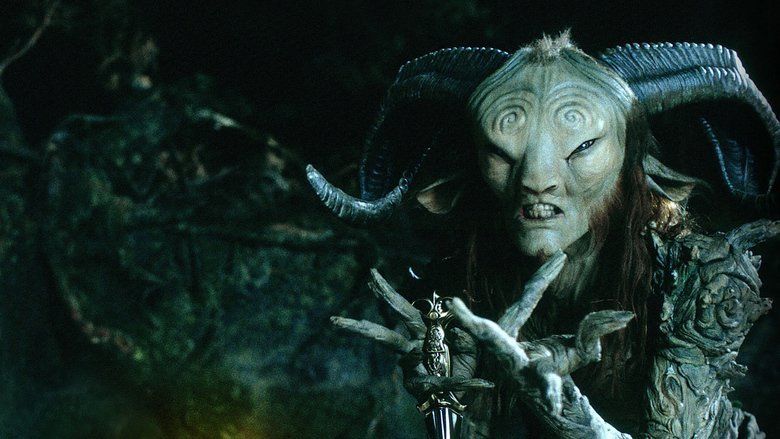
Pan s labyrinth
Plot
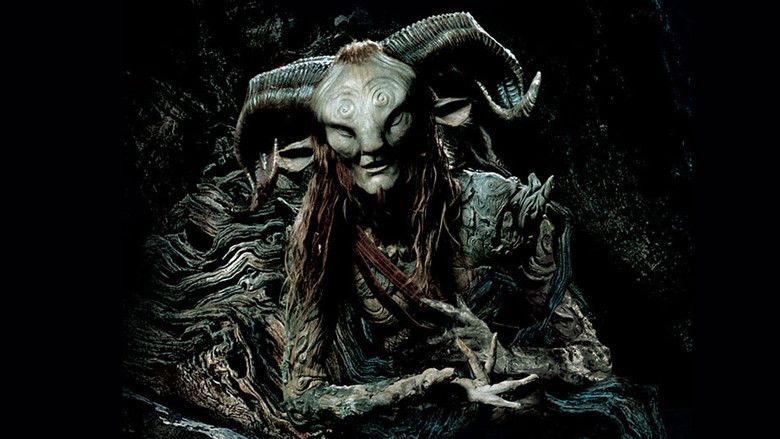
In a fairy tale, Princess Moanna, whose father is the king of the underworld, visits the human world, where the sunlight blinds her and erases her memory. She becomes mortal and dies. The king believes that eventually, her spirit will return to the underworld, so he builds labyrinths around the world in preparation for her return.

In post-Civil War Spain in 1944 (after Francisco Franco has come into power), protagonist Ofelia travels with her pregnant but sickly mother Carmen, to meet Captain Vidal, her new stepfather. Vidal is the son of a famed commander who died in Morocco, believes strongly in Falangism, and has been assigned to hunt down republican rebels.
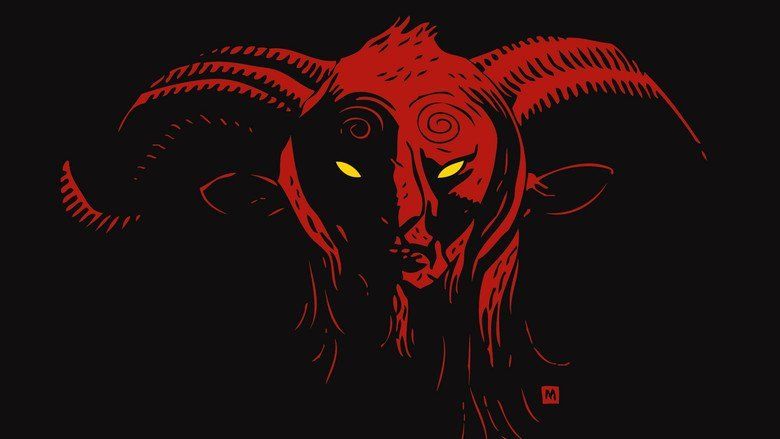
A large stick insect, which Ofelia believes to be a fairy, leads Ofelia into an ancient stone labyrinth, but she is stopped by Mercedes, Vidal's housekeeper, who is secretly supporting the rebels. That night, the insect appears in Ofelia's bedroom, where it becomes a fairy and leads her through the labyrinth. There, she meets the faun, who believes she is the reincarnation of Princess Moanna. He gives her three tasks to complete in order for her to acquire immortality. Meanwhile, Vidal murders two local farmers detained (erroneously) on suspicion of helping the rebels.

Ofelia completes the first task—retrieving a key from the belly of a giant toad—but becomes worried about her mother, whose condition is worsening. The faun gives Ofelia a mandrake root, which eases Carmen's illness. Accompanied by three fairy guides, Ofelia then completes the second task—retrieving a dagger from the lair of the Pale Man, a child-eating monster. Although she was warned not to consume anything there, she eats two grapes, awakening the Pale Man. He eats two of the fairies and chases Ofelia, but she manages to escape. Infuriated at her disobedience, the faun refuses to give Ofelia the third task.
Vidal tortures a captive rebel, and then kills Doctor Ferreiro—who is also a rebel collaborator—after he euthanized the tortured prisoner. Vidal catches Ofelia tending to the mandrake root, and Carmen throws it into the fire, where it writhes and screams in agony. Carmen immediately develops painful contractions and dies giving birth to a son. Soon after, Vidal discovers that his housekeeper Mercedes is a spy. Ofelia is locked in her bedroom, and Mercedes is taken to be tortured. However, she frees herself, stabs Vidal, and rejoins the rebels.
The faun returns to Ofelia and tells her to bring her baby brother into the labyrinth. Vidal pursues her. The faun tells Ofelia that opening the portal to the underworld requires the blood of an innocent. The faun suggests a few drops of her baby brother's blood. Ofelia refuses to harm her brother; for further disobeying his orders, the faun refuses to help her.
Vidal finds Ofelia talking to someone (the faun) whom Vidal cannot see. Vidal takes the baby from her arms and fatally shoots Ofelia; then, when he reaches the labyrinth's entrance, he is surrounded by the rebels who have taken over the outpost. Knowing that he will be killed, he hands the baby to Mercedes, demanding that she tell his son the exact time of his father's death. Mercedes replies that the child will never know so much as his name. Her brother Pedro kills Vidal.
Mercedes enters the labyrinth and comforts the dying girl. Drops of Ofelia's blood fall down the center of the spiral stone staircase onto an altar. Ofelia then appears in a golden throne room. The king of the underworld says that she passed the final test, which was to choose to spill her own blood rather than that of her baby half-brother. The faun praises Ofelia for her choice, and addresses her as "Her Majesty". The queen of the underworld, her mother, invites Ofelia/Moanna to sit next to her father, and rule at his side. In the stone labyrinth, Ofelia smiles as she dies.
The epilogue completes the tale of Princess Moanna, stating that she ruled wisely and left quiet traces of her time in the human realm, "visible only to those who know where to look".
Cast
Influences
The idea for Pan's Labyrinth came from Guillermo del Toro's notebooks, which he says are filled with "doodles, ideas, drawings and plot bits". He had been keeping these notebooks for twenty years. At one point during production, he left the notebook in a taxi in London and was distraught, but the cabbie returned it to him two days later. Though he originally wrote a story about a pregnant woman who falls in love with a faun, Sergi López said that del Toro described the final version of the plot a year and a half before filming. Lopez said that "for two hours and a half he explained to me all the movie, but with all the details, it was incredible, and when he finished I said, 'You have a script?' He said, 'No, nothing is written'". López agreed to act in the movie and received the script one year later; he said that "it was exactly the same, it was incredible. In his little head he had all the history with a lot of little detail, a lot of characters, like now when you look at the movie, it was exactly what he had in his head".
Del Toro got the idea of the faun from childhood experiences with "lucid dreaming". He stated on The Charlie Rose Show that every midnight, he would wake up, and a faun would gradually step out from behind the grandfather's clock. Originally, the faun was supposed to be a classic half-man, half-goat faun fraught with beauty. But in the end, the faun was altered into a goat-faced creature almost completely made out of earth, moss, vines, and tree bark. He became a mysterious, semi-suspicious relic who gave both the impression of trustworthiness and many signs that warn someone to never confide in him at all.
Del Toro has said the film has strong connections in theme to The Devil's Backbone and should be seen as an informal sequel dealing with some of the issues raised there. Fernando Tielve and Íñigo Garcés, who played the protagonists of The Devil's Backbone, make cameo appearances as unnamed guerrilla soldiers in Pan's Labyrinth. Some of the other works he drew on for inspiration include Lewis Carroll's Alice books, Jorge Luis Borges' Ficciones, Arthur Machen's The Great God Pan and The White People, Lord Dunsany's The Blessing of Pan, Algernon Blackwood's Pan's Garden and Francisco Goya's works. In 2004, del Toro said: "Pan is an original story. Some of my favourite writers (Borges, Blackwood, Machen, Dunsany) have explored the figure of the god Pan and the symbol of the labyrinth. These are things that I find very compelling and I am trying to mix them and play with them." It was also influenced by the illustrations of Arthur Rackham.
Del Toro wanted to include a fairy tale about a dragon for Ofelia to narrate to her unborn brother. The tale involved the dragon, named Varanium Silex, who guarded a mountain surrounded by thorns, but at its peak is a blue rose that can grant immortality. The dragon and the thorns ward off many men though, who decide it is better to avoid pain than to be given immortality. Although the scene was thematically important, it was cut short for budget reasons.
There are differing ideas about the film's religious influences. Del Toro himself has said that he considers Pan's Labyrinth "a truly profane film, a layman's riff on Catholic dogma", but that his friend Alejandro González Iñárritu described it as "a truly Catholic film". Del Toro's explanation is "once a Catholic, always a Catholic," however he also admits that the Pale Man's preference for children rather than the feast in front of him is intended as a criticism of the Catholic Church. Additionally, the priest's words during the torture scene were taken as a direct quote from a priest who offered communion to political prisoners during the Spanish Civil War: "Remember my sons, you should confess what you know because God doesn't care what happens to your bodies; He already saved your souls."
In regards to whether or not the fantasy underworld was real or a product of Ofelia's imagination, del Toro stated in an interview that, while he believes it is real, the movie "should tell something different to everyone. It should be a matter of personal discussion". He then mentioned there were several clues in the movie indicating the underworld was indeed real.
The film was shot in a Scots Pine forest situated in the Guadarrama mountain range, Central Spain. Guillermo Navarro, the director of photography, said that "after doing work in Hollywood on other movies and with other directors, working in our original language in different scenery brings me back to the original reasons I wanted to make movies, which is basically to tell stories with complete freedom and to let the visuals really contribute to the telling of the story".
The pale man's eyes on his hands is a feature shared by the Japanese mythological monster the Tenome. Te-no-me means "eyes on hands".
Effects
Pan's Labyrinth employs some computer-generated imagery in its effects, but mostly uses complex make-up and animatronics. The giant toad was inspired by The Maze. Del Toro himself performed the noises. The mandrake root is a combination of animatronics and CGI. Del Toro wanted the fairies "to look like little monkeys, like dirty fairies", but the animation company had the idea to give them wings made of leaves.
Jones spent an average of five hours sitting in the makeup chair as his team of David Marti, Montse Ribe and Xavi Bastida applied the makeup for the Faun, which was mostly latex foam. The last piece to be applied was the pair of horns, which weighed ten pounds and were extremely tiring to wear. The legs were a unique design, with Jones standing on eight-inch-high lifts, and the legs of the Faun attached to his own. His lower leg was eventually digitally erased in post production. Servos in the head flapped the Faun's ears and blinked the eyes, and were remotely operated by David Marti and Xavi Bastida from DDT Efectos Especiales while on set. Del Toro told Jones to "go rock star... like a glam rocker. But less David Bowie, more Mick Jagger".
The Captain's room, as shown in the scene where Captain Vidal is shaving, is supposed to resemble his father's watch, which del Toro says represents his troubled mind.
A bout of weight loss on Del Toro's part inspired the physical appearance of the saggy-skinned Pale Man. In order to see while performing the part, Doug Jones had to look out of the character's nostrils, and its legs were attached to the front of the green leotard which Jones wore.
Subtitles
The film uses subtitles for its translation into other languages, including English. Del Toro wrote them himself, because he was disappointed with the subtitles of his previous Spanish film, The Devil's Backbone. In an interview, he said that they were "for the thinking impaired" and "incredibly bad". He spent a month working with two other people, and said that he did not want it to "feel like... watching a subtitled film".
Distribution
Pan's Labyrinth was premiered at the 2006 Cannes Film Festival on 27 May 2006. Its first premiere in an English-speaking country was at the London FrightFest Film Festival on 25 August 2006. Its first general release was in Spain on 11 October 2006, followed by a release in Mexico nine days later. On 24 November 2006 it had its first general English release in the United Kingdom; that month it was also released in France, Serbia, Belgium, Italy, Russia, Singapore and South Korea. It had a limited release in Canada and the United States on 29 December 2006, in Australia on 18 January 2007, in Taiwan on 27 April 2007, in Slovenia on 17 May 2007 and in Japan on 29 September 2007. Its widest release in the United States was in 1,143 cinemas.
The film was released on DVD on 12 March 2007 in the UK by Optimum Releasing in a two-disc special edition. The film was released in the United States on 15 May 2007 from New Line Home Entertainment in both single-disc and double-disc special edition versions, featuring an additional DTS-ES audio track not present on the UK version. Additionally, the film received a special limited edition release in South Korea and Germany. Only 20,000 copies of this edition were manufactured. It is presented in a digipak designed to look like the Book of Crossroads. The Korean first edition contains two DVDs along with an art book and replica of Ofelia's key. The German special limited edition contains three DVDs and a book containing the movie's storyboard. Pan's Labyrinth was released for download on 22 June 2007 from Channel 4's on-demand service, 4oD.
High definition versions of Pan's Labyrinth were released in December 2007 on both Blu-ray Disc and HD DVD formats. New Line stated that due to their announcement of supporting Blu-ray exclusively, thus dropping HD DVD support with immediate effect, Pan's Labyrinth would be the only HD DVD release for the studio, and would be discontinued after current stock was depleted. Both versions had a PiP commentary while web extras were exclusive to the HD DVD version.
Reception
Pan's Labyrinth received virtually universal critical acclaim. Rotten Tomatoes gives the film a score of 95% based on 227 reviews with an average rating of 8.6/10. The site's consensus reads: "Pan's Labyrinth is Alice in Wonderland for grown-ups, with the horrors of both reality and fantasy blended together into an extraordinary, spellbinding fable." Based on reviews from 37 critics, it received a 98/100 score at Metacritic, making it Metacritic's highest-rated film of the 2000s decade and the second highest-rated movie of all time. At its Cannes Film Festival release, it received a 22-minute standing ovation, one of the longest in the festival's history. It also received a standing ovation at the 2006 Toronto International Film Festival, its first release in the Americas.
Mark Kermode, in The Observer, labeled Pan's Labyrinth as the best film of 2006, describing it as "an epic, poetic vision in which the grim realities of war are matched and mirrored by a descent into an underworld populated by fearsomely beautiful monsters". Stephanie Zacharek wrote that the film "works on so many levels that it seems to change shape even as you watch it", and Jim Emerson called the film "a fairy tale of such potency and awesome beauty that it reconnects the adult imagination to the primal thrill and horror of the stories that held us spellbound as children". Roger Ebert reviewed the film after his surgery and put it on his Great Movies list on 27 August 2007; when he compiled his belated top ten films of 2006, Pan's Labyrinth was #1, with him stating "But even in a good year I'm unable to see everything. And I'm still not finished with my 2006 discoveries. I'm still looking at more 2007 movies, too, and that list will run as usual in late December. Nothing I am likely to see, however, is likely to change my conviction that the year's best film was Pan's Labyrinth." The New Yorker's Anthony Lane took special note of the film's sound design, saying it "discards any hint of the ethereal by turning up the volume on small, supercharged noises: the creak of the Captain's leather gloves... the nighttime complaints of floorboard and rafter...."
Some reviewers had criticisms. For The San Diego Union-Tribune, David Elliott said "the excitement is tangible", but added that "what it lacks is successful unity... Del Toro has the art of many parts, but only makes them cohere as a sort of fevered extravaganza". New York Press critic Armond White criticized the film saying that the "superfluous addition of del Toro's fairy-tale sensibility to real human misery made that story insufferable [and that] only critics and fanboys (not the general public) fell for its titular allusion to Borges".
During its limited first three weeks at the United States box office, the film made $5.4 million. As of 1 March 2007, it has grossed over $37 million in North America, and grossed $80 million worldwide. In Spain, it grossed almost $12 million, and it is the fourth highest domestically grossing foreign film in the United States. In the United States, it has generated $55 million from its DVD sales and rentals.
Other awards
Pan's Labyrinth has also earned BAFTA awards for Best Film Not in English, Costume Design, and Makeup and Hair. At the Goya Awards, the equivalent in Spain to the Academy Awards, the film won in many categories including Best Cinematography, Editing, Make Up & Hairstyles, New Actress for Ivana Baquero, Original Screenplay, Sound and Special Effects. At Mexico's Ariel Awards, the film won in 8 categories, including Best Movie and Best Director. The film won the top award at the 2007 edition of Fantasporto. At the 2007 Saturn Awards, it received accolades for Best International Film and Best Performance by a Younger Actor for Ivana Baquero. The film also won "Best Film" at the 2007 Spacey Awards, and "Best Science Fiction Film, TV Movie, or Mini-Series of 2006" at the 2007 Constellation Awards. The film was also nominated for the Grand Prix of the Belgian Syndicate of Cinema Critics. It also won the Hugo Award for Best Dramatic Presentation, Long Form in 2007. At the BBC Four World Cinema Awards 2008, it won the BBC Four World Cinema Award. It has also won a Nebula Award for Best Script and is the Spanish Language film with the most Oscars.
The film was also nominated for a number of other awards such as Best Foreign Language Film at the Academy Awards (losing to The Lives of Others) and the Golden Globes in 2007.
More recently, Metacritic named it the best reviewed film of the decade" in 2010. It is #17 on the BBC list of best 100 films of the 21st century.
Top 10 lists
The film appeared on many critics' top ten lists of the best films of 2006.
Ranked #5 in Empire magazine's "The 100 Best Films of World Cinema" in 2010.
Spanish films
Del Toro himself has indicated similarities with The Spirit of the Beehive, filmed in Francoist Spain, which juxtaposes issues related to the Civil War with horror film. At least one critic has made a connection to a second Spanish film, Cría Cuervos (1975, Saura), again made while Franco was still in power. Doug Cummings (Film Journey 2007) identifies the connection between Cria Cuervos, Spirit of the Beehive and Pan's Labyrinth: "Critics have been summarily referencing Spirit of the Beehive (1973) in reviews of Pan's Labyrinth, but Saura's film–at once a sister work to Erice's classic in theme, tone, even shared actress (Ana Torrent)–is no less rich a reference point."
Non-Spanish films
In a 2007 interview, del Toro noted the striking similarities between his film and Walt Disney Pictures' The Chronicles of Narnia: both films are set around the same time, have similar child-age principal characters, mythic creatures (particularly the fauns), and themes of "disobedience and choice". Says del Toro: "This is my version of that universe, not only 'Narnia', but that universe of children's literature." In fact, del Toro was asked to direct The Chronicles of Narnia: The Lion, the Witch and the Wardrobe but turned it down for Pan's Labyrinth. In addition to Narnia, Pan's Labyrinth has also been compared to films such as Labyrinth, MirrorMask, Spirited Away and Bridge to Terabithia.
Soundtrack
The score for Pan's Labyrinth, created by Spanish composer Javier Navarrete, was released on 19 December 2006. Navarrete and the score were nominated for an Academy Award. It was entirely structured around a lullaby, and del Toro had the entire score included on the soundtrack, even though much of it had been cut during production. The art used for the soundtrack cover was the un-utilized Drew Struzan promotional poster for the film.
- "Long, Long Time Ago (Hace mucho, mucho tiempo)" – 2:14
- "The Labyrinth (El laberinto)" – 4:07
- "Rose, Dragon (La rosa y el dragón)" – 3:36
- "The Fairy and the Labyrinth (El hada y el laberinto)" – 3:36
- "Three Trials (Las tres pruebas)" – 2:06
- "The Moribund Tree and the Toad (El árbol que muere y el sapo)" – 7:12
- "Guerrilleros (Guerrilleros)" – 2:06
- "A Book of Blood (El libro de sangre)" – 3:47
- "Mercedes Lullaby (Nana de Mercedes)" – 1:39
- "The Refuge (El refugio)" – 1:32
- "Not Human (El que no es humano)" – 5:55
- "The River (El río)" – 2:50
- "A Tale (Un cuento)" – 1:55
- "Deep Forest (Bosque profundo)" – 5:48
- "Waltz of the Mandrake (Vals de la mandrágora)" – 3:42
- "The Funeral (El funeral)" – 2:45
- "Mercedes (Mercedes)" – 5:37
- "Pan and the Full Moon (La luna llena y el fauno)" – 5:08
- "Ofelia (Ofelia)" – 2:19
- "A Princess (Una princesa)" – 4:03
- "Pan's Labyrinth Lullaby (Nana del laberinto del fauno)" – 1:47
Cancelled sequel
In November 2007, del Toro confirmed that a sequel, entitled 3993, was in production. However, del Toro finally abandoned the project to direct Hellboy II: The Golden Army.
References
Pan's Labyrinth WikipediaPans Labyrinth IMDb Pans Labyrinth themoviedb.org
